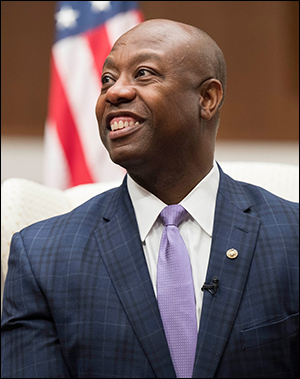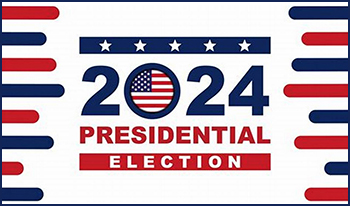By Jim Ellis — Friday, April 19, 2024
President

Former President Donald Trump / Photo by Gage Skidmore
The most interesting part of the poll, however, was the vote division among Hispanics. Within this segment, Trump actually leads President Biden 41-37 percent, which is another indication that Trump has upward mobility among Hispanics while Biden exhibits clear weakness within the community. Trump also does well with Texas women, leading the president 44-34 percent, a trend not seen in many other places. His spread among Lone Star men is 50-34 percent.
Senate
Maryland: Trone Rebounds from Close Poll — We earlier reported on a poll from Maryland Democratic Senate candidate Angela Alsobrooks (Garin-Hart-Yang Research Group; April 8-10; 600 likely Maryland Democratic primary voters; live interview) that found her trailing US Rep. David Trone (D-Potomac) by just three percentage points, 43-40 percent.
Already, we see a counter poll, this one coming from the Baltimore Sun newspaper. According to their new survey (OpinionWorks; April 7-10; 1,292 likely Maryland general election voters; 600 Democratic primary voters), Rep. Trone holds a commanding advantage over Alsobrooks, topping her 48-29 percent. With such an obvious difference between the two professional polls conducted in the same time frame with identical sample sizes, it is clear we will need further data to better understand where this race resides. Expect heavy campaigning to occur as we move closer to the May 14 Maryland primary.
House
AL-2: Shomari Figures Wins Dem Runoff — As expected, Obama Justice Department official Shomari Figures, who placed first in the original Democratic primary back on March 5, easily defeated state House Minority Leader Anthony Daniels by a 61-39 percent count. Figures, the son of parents who both served in the Alabama Senate, now advances to the general election where he will be favored to win a newly created district that President Biden would have carried 56-43 percent.
The Republican runoff ended with a surprise, as attorney Caroleen Dobson upset former state Sen. Dick Brewbaker with a 58-42 percent victory. In the March 5 primary, Brewbaker led a field of eight candidates. Dobson trailed Brewbaker by more than 12 percentage points and only qualified for the second runoff position by 632 votes over the third-place finisher. Like Figures, Dobson will now advance into the Nov. 5 general election.
Governor
Indiana: Braun Attacked for Supporting BLM — While Sen. Mike Braun (R) has shown Republican primary polling strength against Lt. Gov. Suzanne Crouch, former state Commerce Secretary Brad Chambers, and venture capitalist Eric Doden in their battle for the open governor’s position, he is now under attack for statement indicating his support for the Black Lives Matter organization.
The American Advancement organization is running ads featuring Braun saying, “I support that movement because it’s addressing an inequity that has not been solved.” The ad further has him saying he would, “if asked,” join a BLM protest as the narrator continually calls him a “RINO” (Republican In Name Only). It remains to be seen if the Super Pac buys enough airtime to make their negative attack on Sen. Braun stick.






